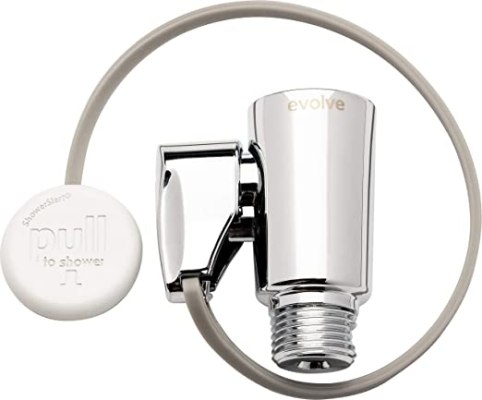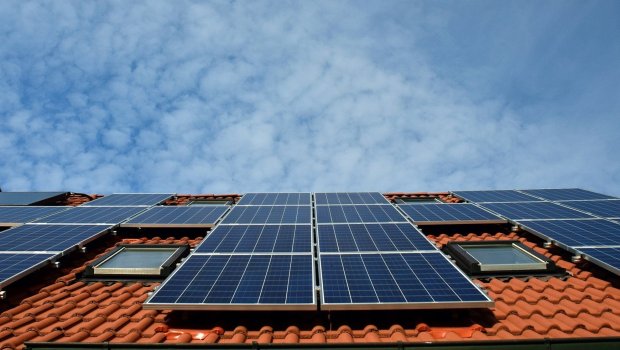Thermostatic flow valves – energy savings, pros and cons, and installation
Energy Disrupter

Thermostatic flow valves save energy and water while improving the shower experience! (pic courtesy of HomeEfficiency.com)
You know the feeling – you turn the shower on, stand there for a while with water running over your hand, waiting for it to get hot. Then the phone rings, or you get bored and start brushing your teeth or plucking eyebrow hairs, and then you go back in a bit and the water is nice and hot. The question then, is how long has it been running your expensive hot water right down the drain? Plus all those carbon emissions and wasted water! Plus now you gotta hurry, because you know you may run out of hot water or your wife will think you’re taking too long showers if she doesn’t have hot water later.
No worries, GLI readers, we’ve got you covered. TSV, or thermostatic flow valves, are cropping up everywhere as people look to save money while also helping the planet. At about $30 retail, they’re not inexpensive, so are they worth it? In this post, we’ll go through the technology behind the TSV, then look at how to install one, then look at the return on investment.
What is a thermostatic flow valve?
TSV are devices (pictured above) that slow the flow of water to a trickle once the water gets to a certain temperature. According to HomeEfficiency.com, the devices get pressurized when water temperatures rise, which triggers the valve to close almost completely. What this does is slow the flow of water to a trickle when it gets hot – as these are engineered to be close for the temperature usually found in hot shower water. So basically, when you turn on the shower, you can walk away, and when it gets to the temp you want, it’ll just trickle out, wasting almost no water but keeping the temp, until you pull the tab to re-open the valve. Once you do, the valve stays open for the remainder of your shower.
Effective?
There’s clear savings with a TSV. Quantifying it is not easy, however, since it is very dependent on the user. If you’re the type of person who, like me, might walk away from a shower that’s still running cold because there’s just that one other thing you need to do or write down…and then get carried away and not realize it’s been 5 minutes, well…the savings are very good. Figure it this way – you save water, energy, and wastewater (plus most importantly, you save your partner not getting bitter at you when she runs out of hot water later).
Figure if you let just one extra minute of water go, say, twice a week, you’re looking at 2.5 gallons per minute (or less, if you have a high efficiency showerhead) times 2 times a week, times 52 weeks a year. That’s 520 gallons of wasted hot water, or enough to take about 20-35 more showers per year. It adds up!
How to install
Installing a TSV is super simple. Basically you unscrew your showerhead, screw the TSV onto the male end of the pipe coming out of the wall, and then screw the showerhead onto the TSV’s male end. You can wrap teflon tape around the male ends if you like – it is sometimes necessary especially for older pipes or where the rubber gaskets on your showerhead might’ve worn out over time, but it may not be necessary. You can always try, then if it’s leaking, just unscrew the parts again, teflon tape the male ends, and put them back.
And you’re on your way to saving money…and the planet!
Get the Green Living Ideas book in softcover or PDF for as low as $2.99!

Related

















